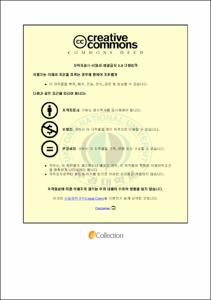만 4세 산새반 유아들의 관계적 공격성에 대한 분석
- Alternative Title
- An analysis on the relational aggression of 4-olds children in the San-sae class
- Abstract
- The purpose of this study is to analysis on the proactive and reactive relational aggression of 4-olds children in the San-sae class. To achieve this purpose, the research questions have been determined as follows.
1. How is the proactive-relational aggression in the context of peer interaction being used among children in San-sae class?
2. How is the reactive-relational aggression in the context of peer interaction being used among children in San-sae class?
The San-sae class at Ha-neul Kindergarten in Busan was selected as the subject for this study. The teacher and 23 preschoolers(boy=11, girl=12) participated in the research. This study employ ethnographic approach, such as participant observation and in-depth interview, to investigate the relational aggression among 4-olds children in San-sae class. The data collected during May 11 to July 22, 2009, with 30 participant observation, 2 formal interviews, and several informal interviews. Collected date were analyzed 3 activities by quantitative data analysis that Miles and Huberman(1984) suggested.
The main results of this study as follows:
First, proactive-relational aggression appearing in San-sae class is mainly observed more girls than boy. Most hostile phenomenon of proactive-relational aggression is shown main purpose that 'rejection of unliked child'. Aggressive child Min-su and withering child Kyung-a are fixed for this target and they showed negative self-perception. While it's easy to find the strategy to reject aggressive child, it's difficult to find the strategy to reject withering child.
Second, reactive-relational aggression used by girls in San-sae class was observed in the situation that occurs emotional or relational damage. On the other hands, it used by boys was observed in the situation of instrumentality harm. Specially. The strategies ,which are “threatening Relationship Withdrawal" and "Withdrawing friend relationship", are strong means among the close friends in girls. I observed this strategies that are strong means for boys who were not getting along with friends.
Finally, the main strategies used in proactive-relational aggression are ways to ignore peer or utilize play rules. On the other hands, the way to manipulate their close friendship was mainly used in reactive-relational aggression.
- Issued Date
- 2010
- Awarded Date
- 2010. 2
- Type
- Dissertation
- Keyword
- 주도적-관계적 공격성 반응적-관계적 공격성 참여관찰 심층면담
- Publisher
- 부경대학교
- Alternative Author(s)
- Eun-Joung, JOUNG
- Affiliation
- 부경대학교 대학원
- Department
- 대학원 유아교육과
- Advisor
- 이희영, 이경화
- Table Of Contents
- Ⅰ. 서론 1
1. 연구의 필요성 및 목적 1
2. 연구문제 5
3. 연구자 6
가. 외로운 병원놀이와 바보 3형제 6
나. 나도 같이 놀고 싶은데… 7
다. 밝고 명랑한 아이들의 양면성 9
Ⅱ. 이론적 배경 11
1. 관계적 공격성 11
가. 공격성의 개념 및 발달 11
나. 공격성의 유형 13
다. 유아기 관계적 공격성에 관한 선행연구 17
2. 또래관계 19
가. 또래관계의 개념 및 발달 19
나. 유아기 또래관계와 공격성 21
Ⅲ. 연구 방법 23
1. 연구대상 23
가. 산새반의 유아들 24
나. 산새반의 김교사 26
다. 산새반의 하루일과 28
2. 자료수집 29
가. 참여관찰 30
나. 심층면담 31
3. 자료분석 32
Ⅳ. 산새반 유아들의 주도적-관계적 공격 현상 33
1. 싫은 유아에 대한 거부 33
가. 공격적인 유아에 대한 거부 34
나. 위축된 유아에 대한 거부 42
2. 사회적 힘의 과시 48
Ⅴ. 산새반 유아들의 반응적-관계적 공격 현상 54
1. 정서 및 관계 훼손에 대한 보복 54
2. 도구성 훼손에 대한 보복 64
Ⅵ. 논의 및 결론 70
1. 요약 및 논의 70
2. 결론 및 제언 75
77
86
- Degree
- Master
- Files in This Item:
-
-
Download
 만 4세 산새반 유아들의 관계적 공격성에 대한 분석.pdf
기타 데이터 / 836.39 kB / Adobe PDF
만 4세 산새반 유아들의 관계적 공격성에 대한 분석.pdf
기타 데이터 / 836.39 kB / Adobe PDF
-
Items in Repository are protected by copyright, with all rights reserved, unless otherwise indicated.